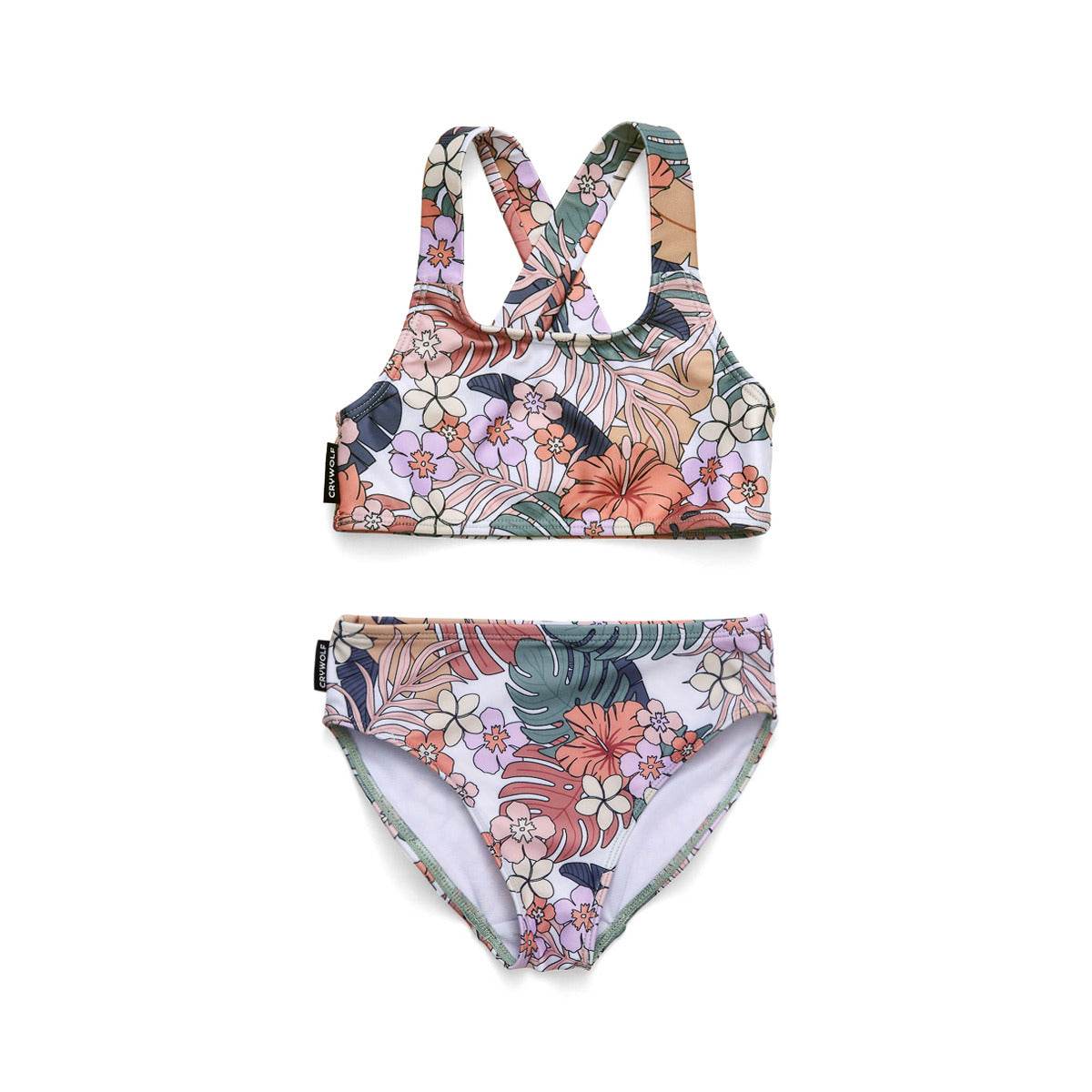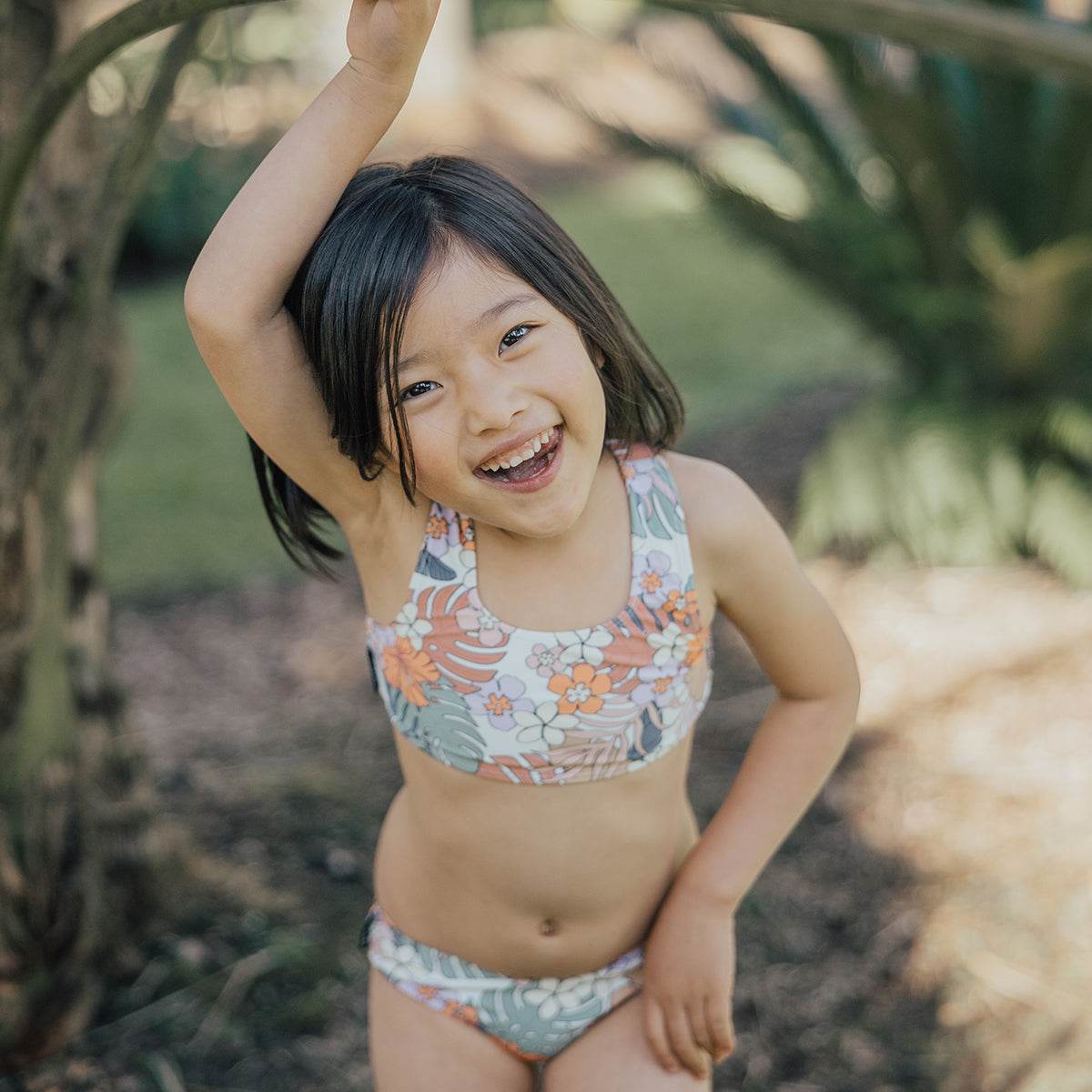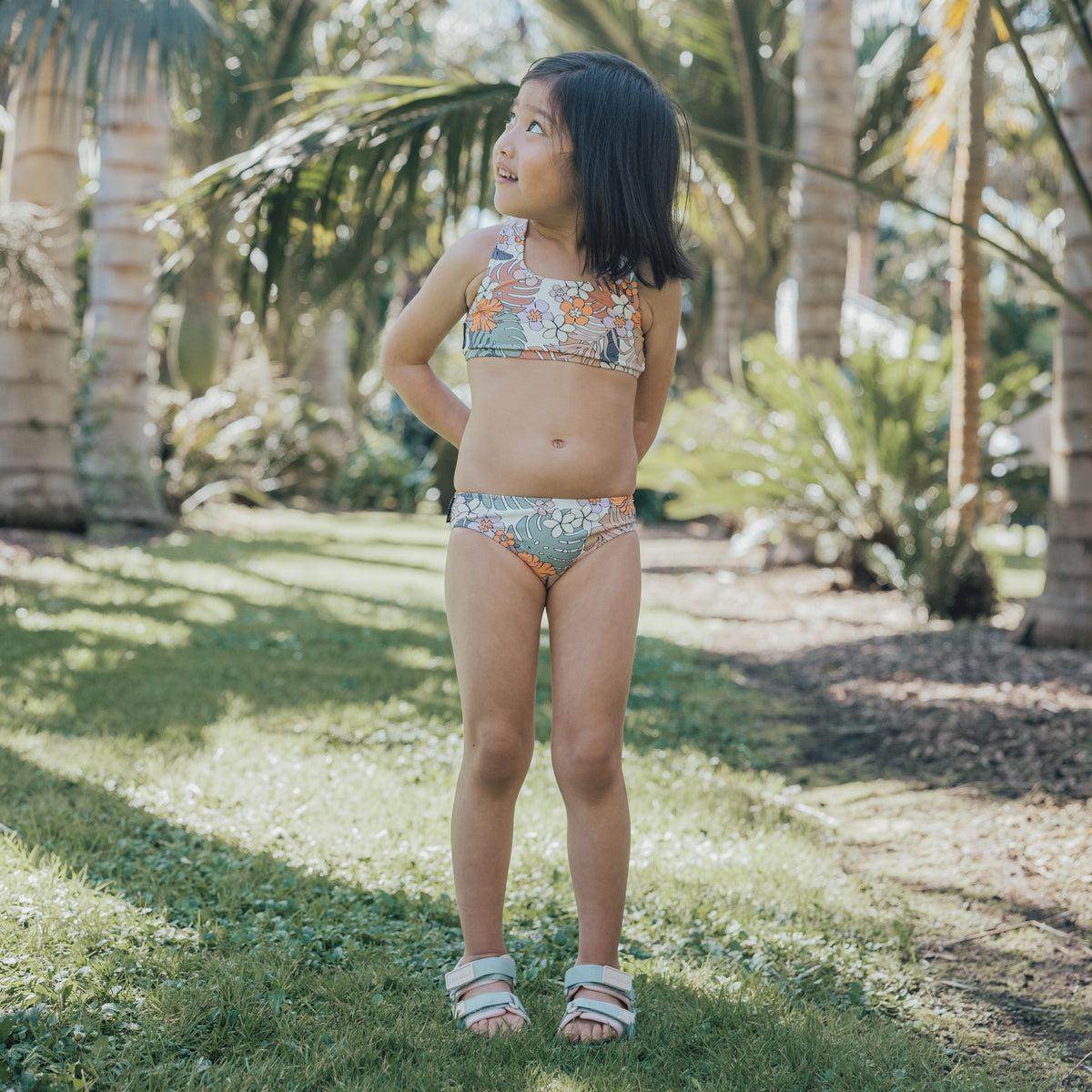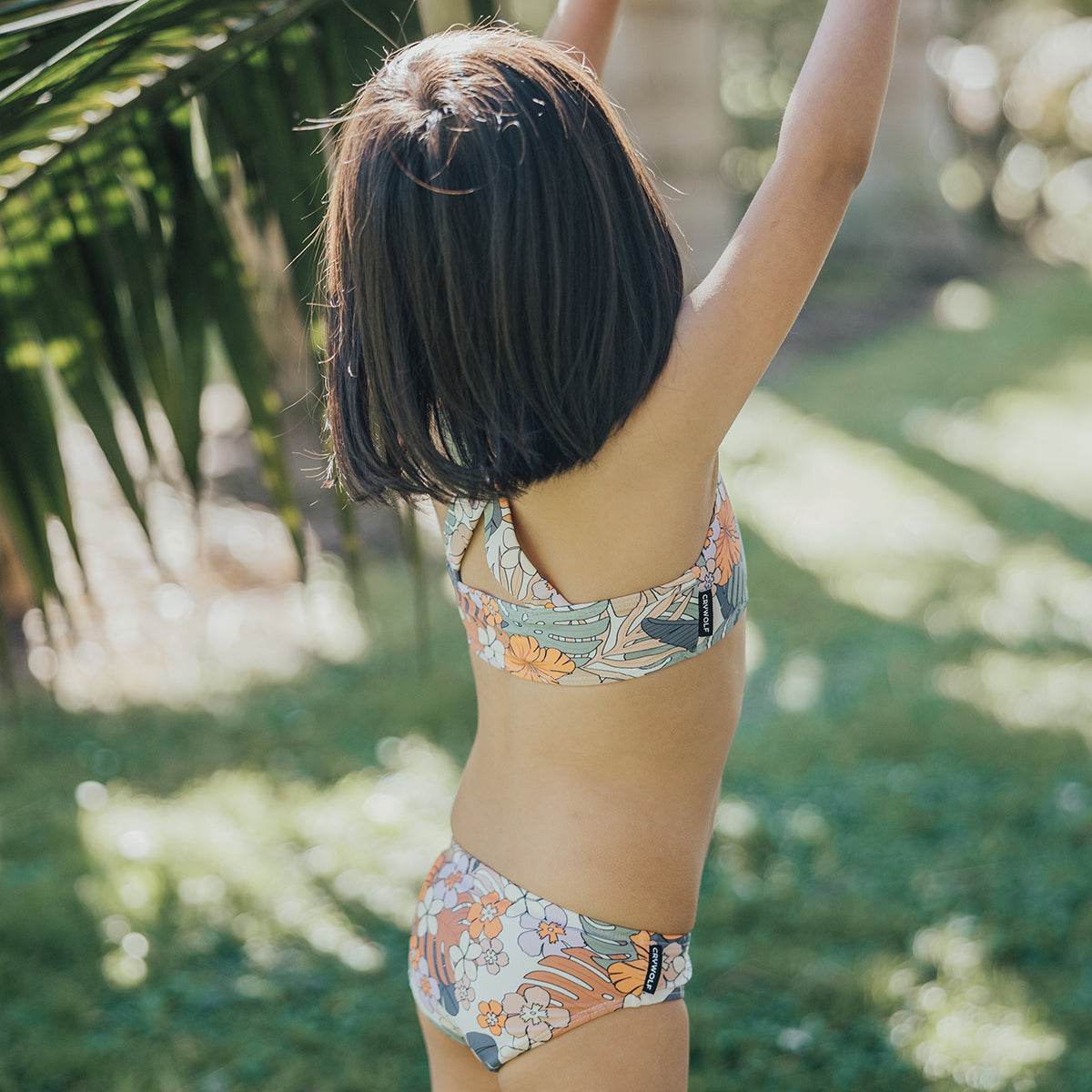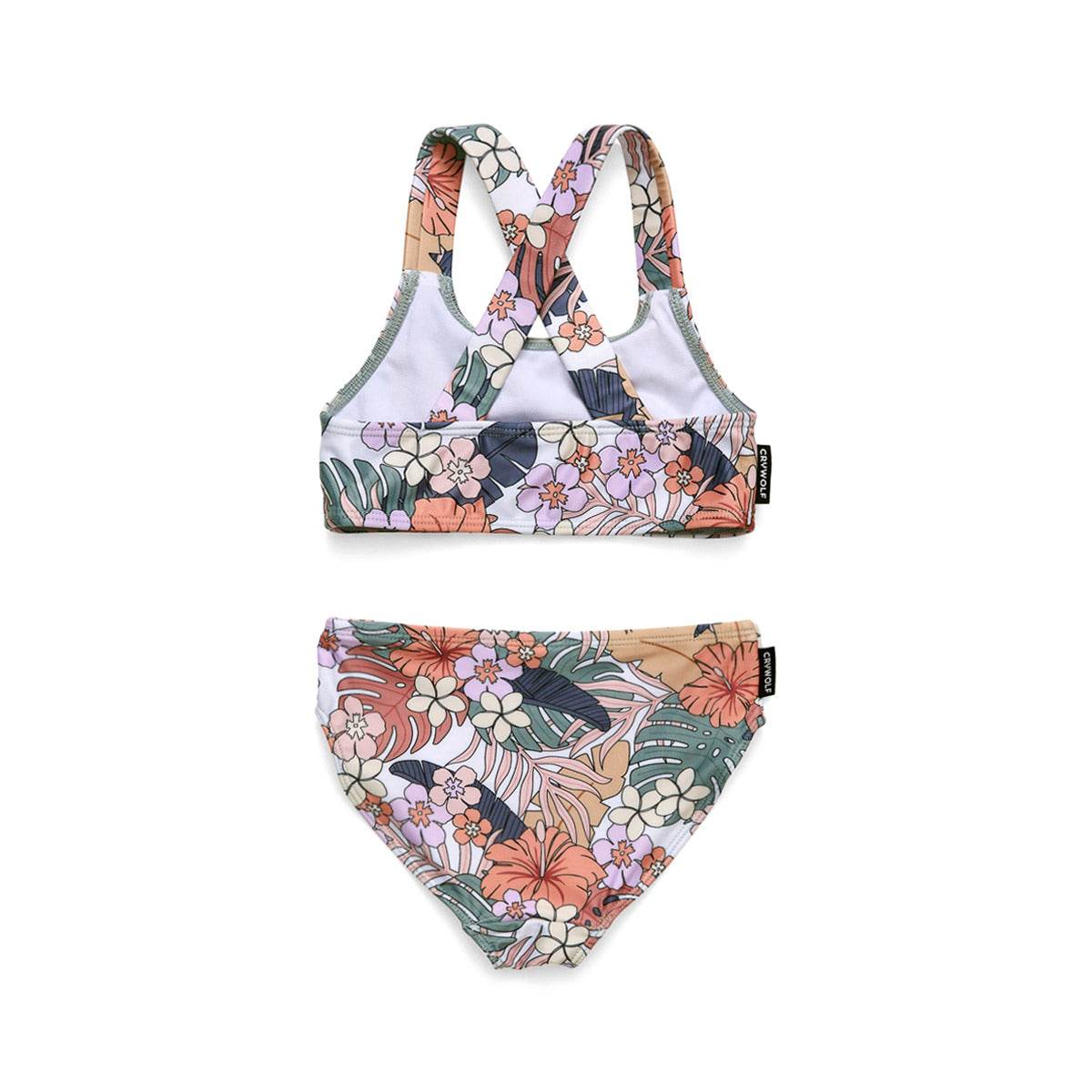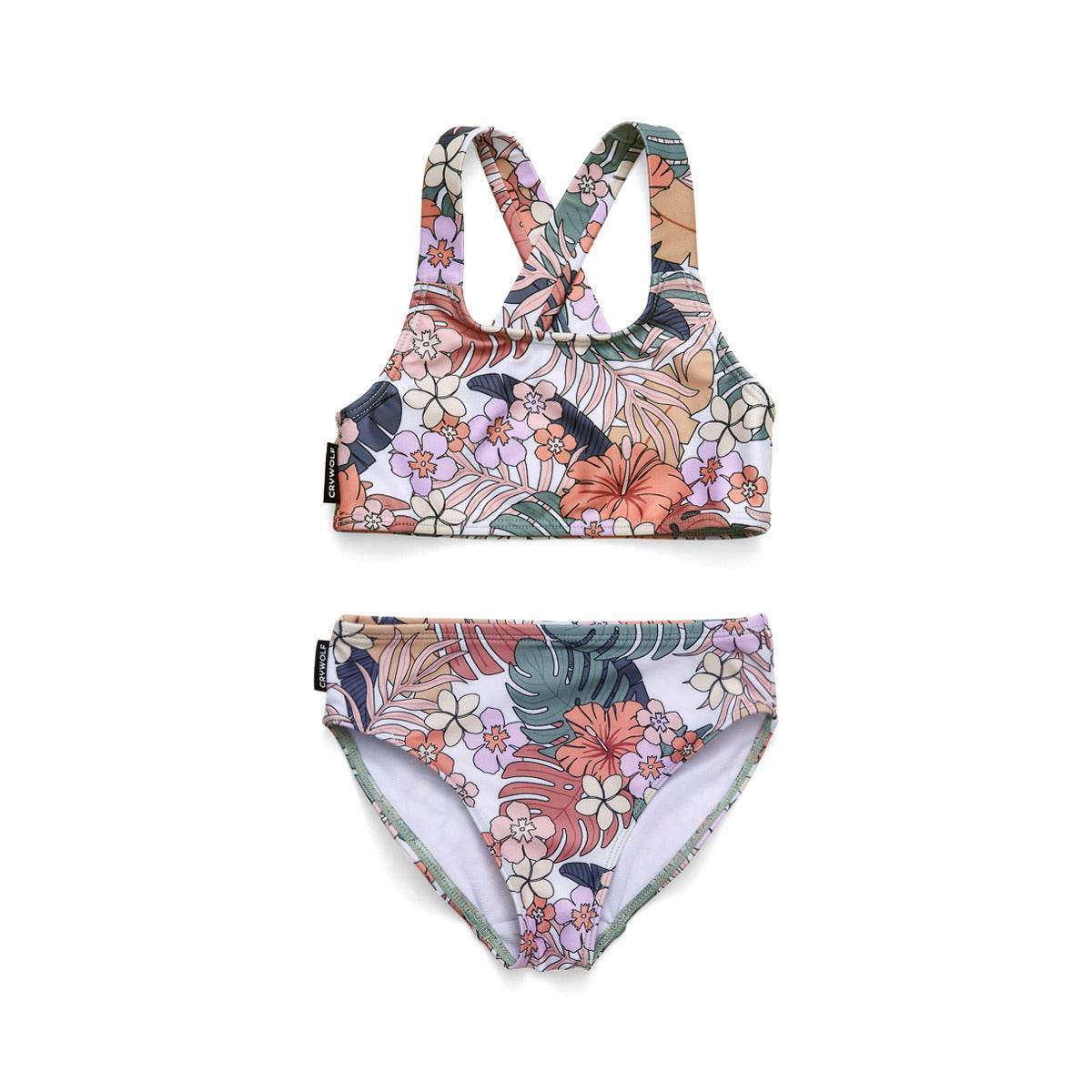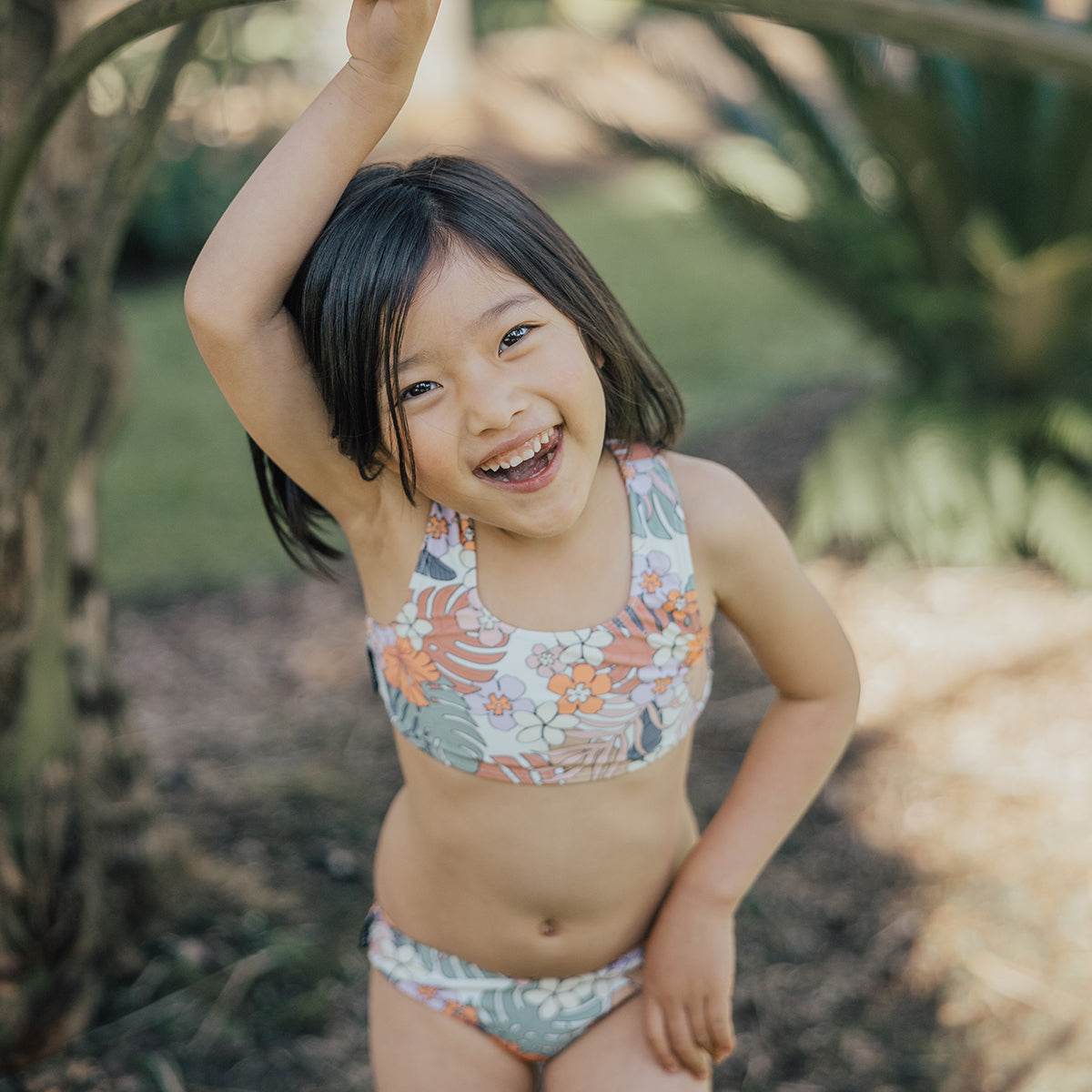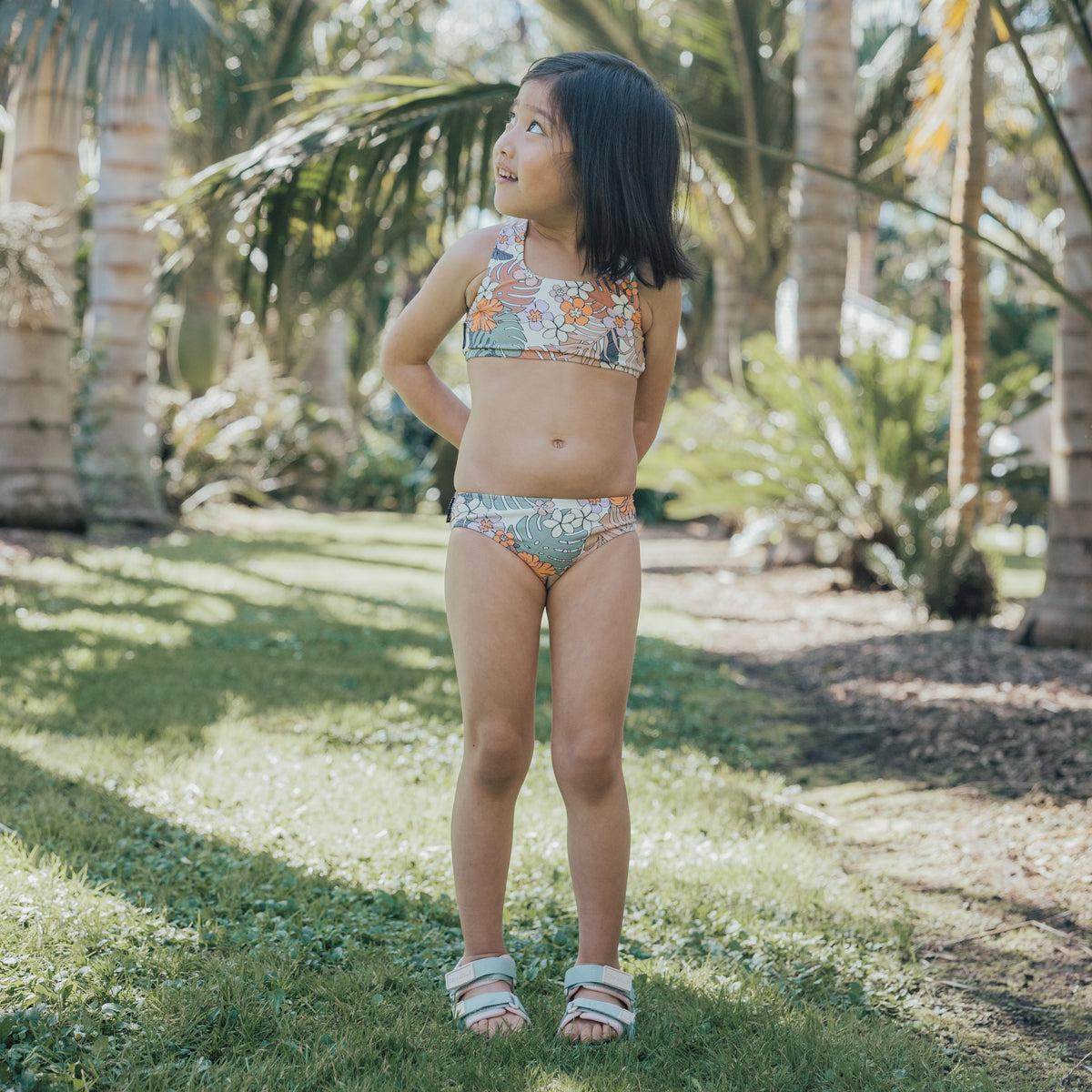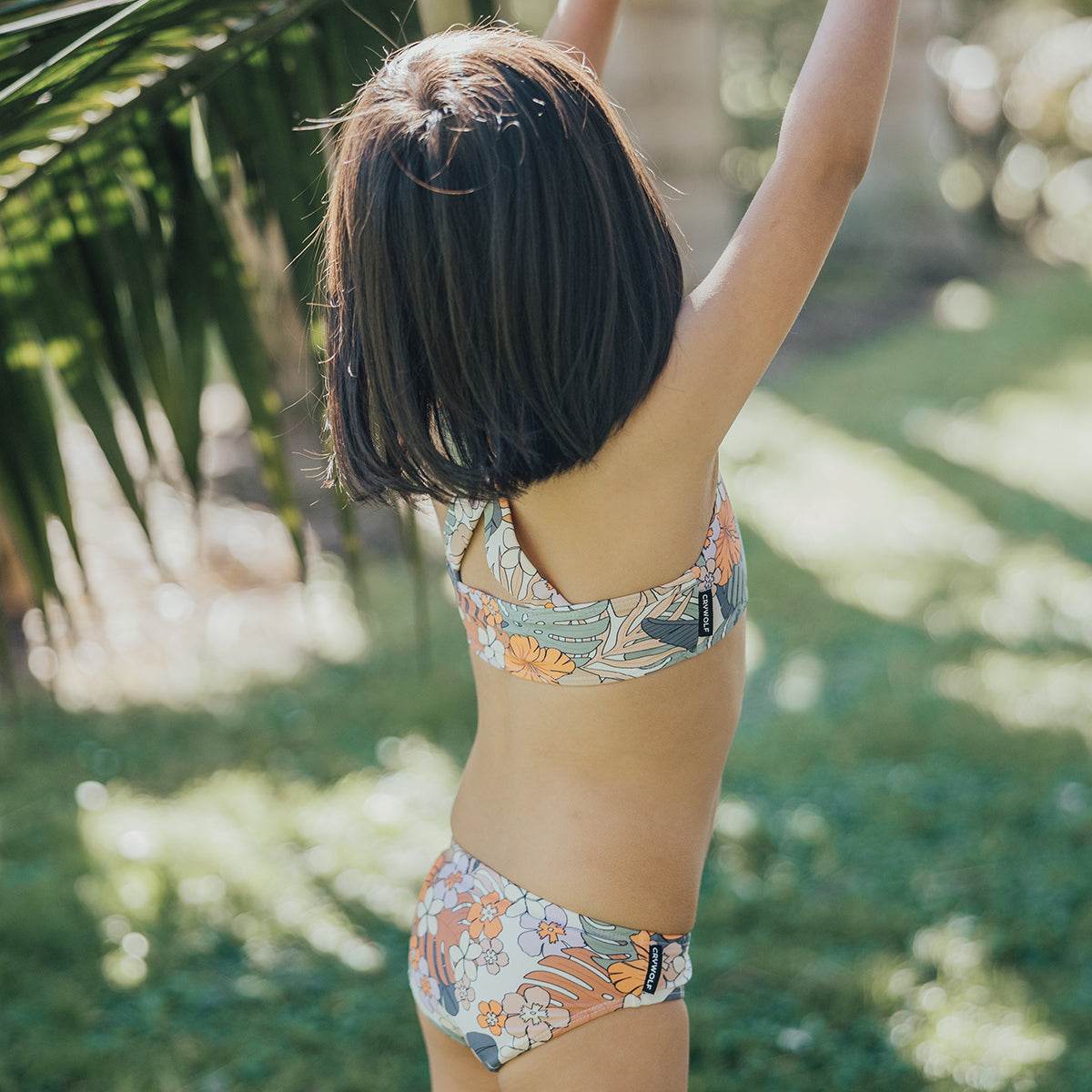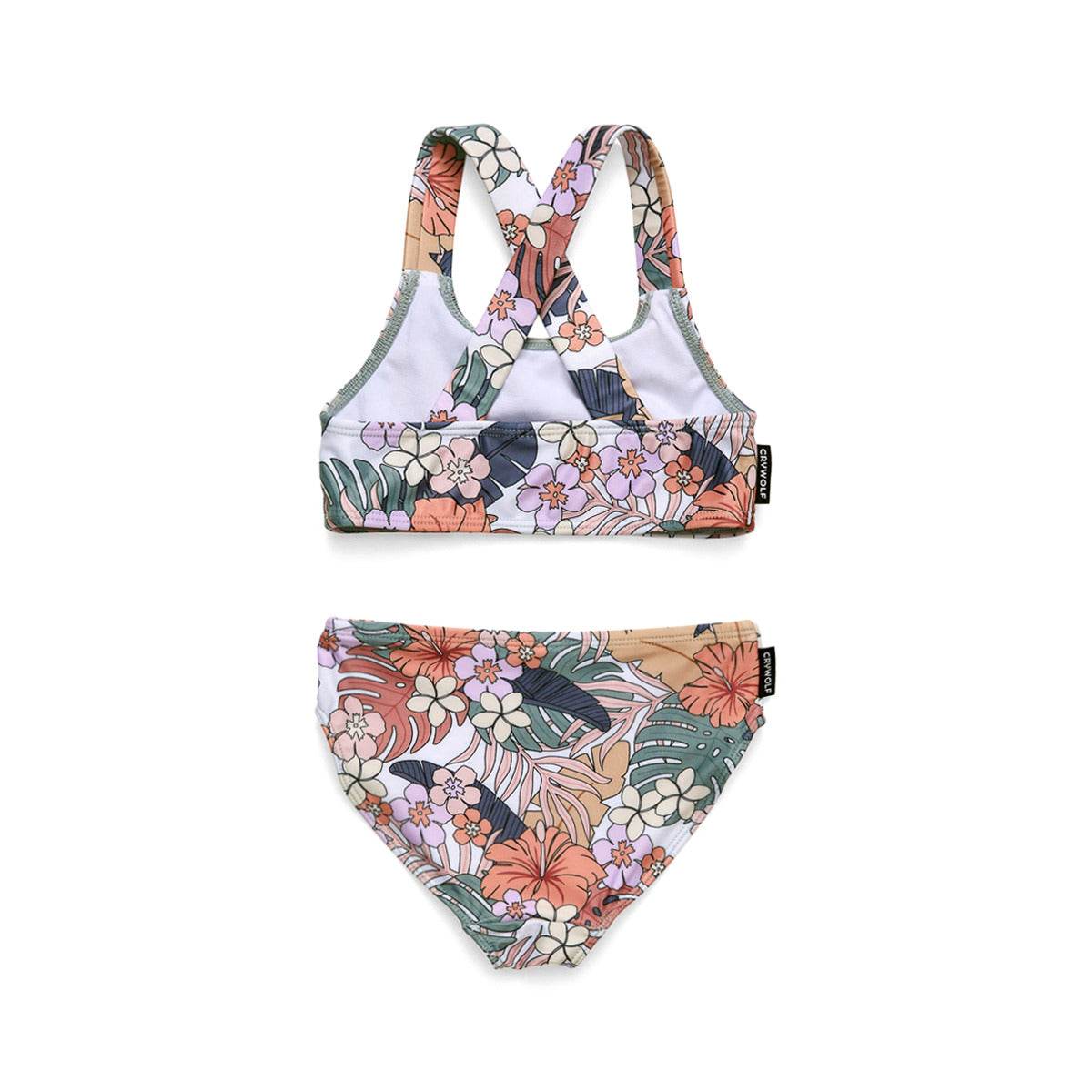Bikini
Bikini
SKU:CWTPTRF-2
Clothing Prem to 18 Months
| Size | Age Guide | Weight | Height |
|---|---|---|---|
| Premature | Premature or Small Newborn | Up to 4Kg | Up to 55cm |
| Newborn | 0-3 months | 4-6Kg | Up to 62cm |
| 3 Month | 3-6 months | 6-8Kg | Up to 68cm |
| 6 Month | 6-12 Month | 8-10Kg | Up to 76cm |
| 12 Month | 12-18 Month | 10-12Kg | Up to 84cm |
| 18 Month | 18-24 Month | 12-14Kg | Up to 92cm |
Clothing 2 to 6 Years
| Size | Age Guide | Height | Chest | Waist | Hip |
|---|---|---|---|---|---|
| 2 Year | 2-3 Years | Up to 100 cm | 56 | 51 | 58 |
| 3 Year | 3-4 Years | Up to 105 cm | 58 | 53 | 60 |
| 4 Year | 4-5 Years | Up to 110 cm | 60 | 55 | 62 |
| 5 Year | 5-6 Years | Up to 115 cm | 62 | 57 | 64 |
| 6 Year | 6-7 Years | Up to 120 cm | 64 | 59 | 66 |
Beanie Size Guide
| Size | Head Circumference | Age Guide |
|---|---|---|
| Premature | 31-35 cm | Premature or Small Newborn |
| Newborn | 35-40 cm | Newborn |
| Small | 40-43 cm | 3-6 Months |
| Medium | 43-47 cm | 6-18 Months |
| Large | 47-52 cm | 18-3 Years |
Sunhat Size Guide
| Size | Head Circumference | Age Guide |
|---|---|---|
| Newborn | 37-40 cm | Newborn |
| Small | 40-43 cm | 3-6 Months |
| Medium | 43-46 cm | 6-12 Months |
| Large | 46-49 cm | 12-24 Months |
| Xtra Large | 49-54 cm | 2-4 Years |
Sleep Pods Size Guide
| Size | Weight | Age Guide | Measurement(Back to Hem) |
|---|---|---|---|
| Newborn | 0-6 kgs | 0-3 Months | 60.5 cm |
| Small | 0-8 kgs | 3-6 Months | 66 cm |
Booties Size Guide
| Size | Age Guide |
|---|---|
| Newborn | 0-3 Months |
| Small | 3-6 Months |
| Medium | 6-12 Months |
| Large | 12-18 Months |
Pretty Brave Baby
| Foot Length (mm) | Insole Length (mm) | EU | UK | Age | INT |
|---|---|---|---|---|---|
| 95-104 | 110 | 16/17 | 2 | 0-6m | S |
| 104-114 | 118 | 18 | 3 | 6-12m | M |
| 114-123 | 127 | 19/20 | 4.5 | 12-18m | L |
| 123-137 | 142 | 21/22 | 5.5 | 16-22m | XL |
Pretty Brave 1st Walker
| Foot Length (mm) | Insole Length (mm) | EU | UK | Age |
|---|---|---|---|---|
| 114-120 | 125-128 | 19 | 3 | 1 yr |
| 120-126 | 132-135 | 20 | 3.5 | 1-2 yrs |
| 126-132 | 138.5-141.5 | 21 | 4.5 | 1-2 yrs |
| 132-138 | 145-148.5 | 22 | 5 | 2 yrs |
Crywolf Swim Nappy
| Size | Length (waist to crotch) | Crotch Width (side to side) |
|---|---|---|
| 0-1 yr | 1-2 yrs | |
| 37 | 38 | |
| 14.5 | 15.5 |
Crywolf Rash Suit
| Size | Length (back neck to crotch) | Chest (arm to arm) | Waist (side to side) | Sleeve (neck to cuff) | Neck Opening(diameter) |
|---|---|---|---|---|---|
| 6-12 Months | 1 yr | 2 yrs | 3 yrs | ||
| 40 | 42 | 44 | 46 | ||
| 25 | 26 | 27 | 28 | ||
| 24 | 25 | 26 | 27 | ||
| 30 | 31.5 | 33 | 34.5 | ||
| 13.25 | 13.25 | 13.8 | 14.3 |
In stock
Couldn't load pickup availability
Overview
Overview
For the perfect blend of style and sport, comes the new range of Crywolf Bikini’s. The set features a crossover bikini top and matching bikini briefs for unrestricted comfort, fun and movement. Designed with sustainability in mind, kids will love to mix and match their Bikini with Crywolf UPF 50+ Rash Vests for all day protection and multi-use.
Fit & Care
Fit & Care
Delivery and Returns
Delivery and Returns
- Delivery: Free within NZ on orders over $100 (excluding bulky items) or $8 standard shipping
- Returns: Accepted within 14 days of receipt with proof of purchase
- Some items are excluded from returns including sale items, hardware, car seats, prams, monitors and personal items - please click here for the full list.
Share this product
Recently viewed products
Related Blogs
Ready to Pack your Beach Bag with Us?
Beach Days Made Easy ☀️ Summer’s here — and if you’re heading to the beach with a baby in tow, you’ll know that travelling light is officially a thing of the past. Gone are the days of throwing a towel and book in a tote and calling it a day. But the good news? Dimples has you covered with all the practical, beautiful beach day essentials to keep your little one protected, comfy, and stylish — and make your life just a little bit easier. 🎒 Pretty Brave Stella Baby Bag The Stella Baby Bag from Pretty Brave is the kind of multitasking hero that every parent needs. Spacious enough to carry all your beach-day essentials, yet stylish enough to double as your weekend bag, it’s designed for real life — sand and all. Inside, you’ll also find a padded change mat that makes those on-the-go nappy changes a breeze. Pack everything from snacks and sunscreen to spare togs and toys — there’s room for it all, without feeling bulky or overstuffed. 🏖️ Wildride Toddler Carrier Ditch the bulky buggy and embrace beach freedom with the Wildride Toddler Carrier. Whether you're navigating sandy paths or just don’t want to wrestle a pram through the dunes, this stylish hip carrier is a smart alternative for toddlers aged 9 months to 4 years (up to 20kg). Ergonomic, compact, and quick to throw on, it offers support without the strain - perfect for when little legs get tired or you’re trying to keep both hands free. Bonus: it folds up small and easily fits into your beach bag when not in use. 🌊 Crywolf Baby & Kids Swimwear Splash-ready and sun-smart, Crywolf swimwear is a go-to for little adventurers. Each piece is made from recycled fibres, offering high protection from the sun while being gentle on the planet. The prints are playful, the coverage is practical, and the quality is built to last - so you can focus on the fun knowing your child is comfy, covered, and looking cute as ever. 🕶️ IZIPIZI Sunglasses Keep those little eyes protected in style with IZIPIZI sunglasses. With 100% UV protection, these sunnies aren’t just adorable — they’re essential for sunny days, whether you’re at the beach, on a walk, or relaxing in the backyard. Available in sizes for babies right through to big kids, IZIPIZI offers thoughtful, lightweight designs that stay on (yes, even on the wriggly ones) and suit every stage. 🌞 Nude Alchemist SPF30 Natural Sunscreen This gentle, broad-spectrum SPF30 sunscreen is specially formulated for delicate skin — making it a family beach bag essential. The Nude Alchemist Natural Sunscreen is made with non-nano zinc oxide for effective sun protection, plus nourishing natural ingredients like shea butter and jojoba oil to soothe and hydrate. Free from harsh chemicals, parabens, and artificial fragrances, it’s safe for babies aged 3 months and up. It’s also reef-safe, water-resistant, and rubs in smoothly with minimal whitening. Just good, honest sun care you can feel great about. 🐚 Over the Dandelions Hooded Muslin Towel Wrap your little one in soft, breathable comfort after a splash in the sea. The Over the Dandelions Hooded Muslin Towel is made from 100% GOTS-certified organic cotton muslin — lightweight, absorbent, and quick-drying, even on those humid summer days. Its generous size and gentle texture make it perfect for drying off, cuddling up, or providing a little shade on the walk back to the car. A must-have for warm-weather adventures. 👒 Dimples Sunhat No beach kit is complete without a good sunhat, and Dimples makes this essential extra lovely. Designed with a wide brim to help shade baby’s face and eyes, these hats are made from soft, breathable fabrics in timeless colours and textures that mix and match effortlessly. Cute, comfy, and protective — it’s the kind of hat you’ll reach for every time you head outdoors. ☀️ Ready, Set, Sun Whether you’re headed to the coast, the local splash pad, or just your own backyard, Dimples has everything you need to make the most of summer with your little one. Thoughtfully chosen, beautifully made, and ready for real life. Pop in-store or browse online to build your ultimate beach day kit — we’ll help you pack like a pro.
Learn moreBaby Swimming Lessons
Swimming is a key life skill, especially when you live in NZ - an island nation with a vast coastline, not to mention all the rivers and lakes. Taking your little one to swimming lessons can have many benefits including the physical (coordination, strength, and motor skills). It’s also a bonding opportunity for Mum, Dad or caregiver to have fun interactions with baby and create memories. And of course, there’s the safety benefit. According to Water Safety NZ, one of the leading causes of death for the under-fives in New Zealand is drowning. Introducing your baby to swimming lessons can be a fantastic way to help them develop water safety skills as well as confidence. Start them young Babies spend their first nine months of existence floating in a pool of warm liquid, so reintroducing them to water is something of an instinctive experience. A good first step to developing water confidence in babies is making bath time engaging and enjoyable. If, with lots of positive reinforcement and support, you can get them used to having water trickling over their head and face, that’s a great start. Swimming lessons Once they’re six months old, babies can go to water safety lessons at a public pool By this age Their immune system will have developed enough give them protection from bugs in the pool water They’re better able to cope with the changes in temperature They’ll have the necessary head control to keep their head above water Their ears will be better able to deal with water if it gets in. Baby swimming classes are less about learning to swim and more about water familiarisation and confidence. Over time they’ll start to make progress towards essential water safety skills, including how to float, kick, and hold their breath. Generally with baby swim classes, Mum or Dad (or grandparent or other caregiver) gets in the pool too, joining in to help build bub’s confidence and keeping things fun with interactive play. It’s likely to start with gentle splashing and activities that encourage movement through the water. Tips for swimming lessons Family changing rooms are great and, if there's room, take your stroller. If you get your little one changed, they can then sit in the stroller while you get changed. Swimming will use up lots of energy – make sure you’ve got what you need to re-fuel them afterwards, whether it's a breast or bottle feed, or a snack Changes in temperature can be hard on little ones – make sure you dress them warmly for the trip out to the car in colder weather. If possible, bring along an extra person to help, it can make all the difference especially if you have both a baby and an older child having lessons. What you need Babies will need a swim nappy . These reusable ones offer an adjustable fit from baby to toddler and are machine washable. When choosing swimwear, opt for chlorine-resistant swimsuits for girls and boys that offer 50+ sun protection so they work for the pool or beach A towel Hooded towel or robe can be great for getting them warm and dry quickly A padded change mat is great to have when faced with a damp changing room Dry clothes and spare nappies to keep everyone snug and happy post-swim. Be Safe Always be aware of the dangers for little ones around water – be that the bath, beach or pool. Never leave them unattended. Babies and toddlers should always be within arms’ reach when you’re in or around water - don’t rely on flotation aids like air rings or armbands. Be alert to hazards in your environment. Swimming pools and spas must be fenced to NZ Standards. Consider also ponds, water features and paddling pools that might be a danger to a curious little one.
Learn moreProtection: Sun Safety for little eyes
Many of us had the sun smart Slip, Slop, Slap message drummed into us from childhood. But are you aware of Slip, Slop, Slap, and Wrap? The message is to slip on some clothing and into the shade, slop on sunscreen, slap on a hat, and wrap on sunglasses. Why are sunglasses important for babies and toddlers? Sunglasses are important to protect your eyes and the delicate skin around them. This is especially important for babies and children for whom overexposure to UV radiation can cause a predisposition to eye problems. Just as a baby’s skin is more vulnerable to the sun, their developing eyes also have an increased susceptibility to UV damage. The New Zealand Association of Optometrists (NZAO) says most of the eye damage caused by UV radiation builds up over a long period of time and cannot be reversed. So the sooner you start protecting your little one’s eyes from the sun, the lower their risk will be of ever developing future eye problems. “There is some evidence that daily exposure to UV radiation in very bright sunlight over many years may increase the risk of developing cataracts which cause a gradual clouding of the natural lens of the eye. Exposure may also increase the risk of macular degeneration, an eye condition resulting from damage to the retina.” In NZ and Australia, we have to be particularly careful as our peak summer UV levels are roughly 40% higher than those at comparable latitudes in the Northern Hemisphere. That’s because Earth’s orbit is elliptical, which means the Southern Hemisphere is closer to the sun during our summer. The thickness of the ozone layer is also a factor as is our clearer air quality. How to choose sunglasses for little ones Treat sunglasses as a necessity, not just an accessory. Although they certainly can be a fun fashion accessory and look super cute on babies! You’ll want to find sunglasses that offer 100% UV protection, like the Izipizi range . Polarized lenses are also a bonus as they protect against glare, giving visual comfort. Opting for grey lenses also means they don’t distort but instead respect natural colours Durability is also key with kids' glasses. Izipizi’s ultra-flexible, BPA-free, and hypoallergenic frames are also great for sensitive skin. In addition, straight arms mean they will also adapt to your baby’s growth. Of course, it's easier said than done to keep sunglasses on a wriggly baby every time you head outside! That’s why Izipizi baby and kids sunglasses come with an optional ultra-flexible and adjustable silicone strap. This helps keep glasses on so they don’t get lost. Finding a comfortable fit will also make your little one happier to wear them. IZIPIZI offers three kids sunglass ranges: Baby for 0-9 months (head size 34-41 cm) Kids for 9-36 months (head circumference 40-47 cm) Kids+ for 3-5 years (head size 46-53 cm) Lead by example, if your children see you wearing sunglasses, they’re more likely to want to wear them too! Getting little ones to wear sunglasses not only protects their eyes now and for the future, it helps them develop habits that last for life. Don’t forget those other sun smart rules: Find shade — especially for babies under 6 months. Car sunshades and stroller sun covers are a good investment. Choose a wide-brimmed hat Try to limit your sun exposure between 10 am and 4 pm when the sun's rays are most intense Dress kids in cool clothing with good coverage Use sunscreen daily, even on a cloudy day.
Learn more

